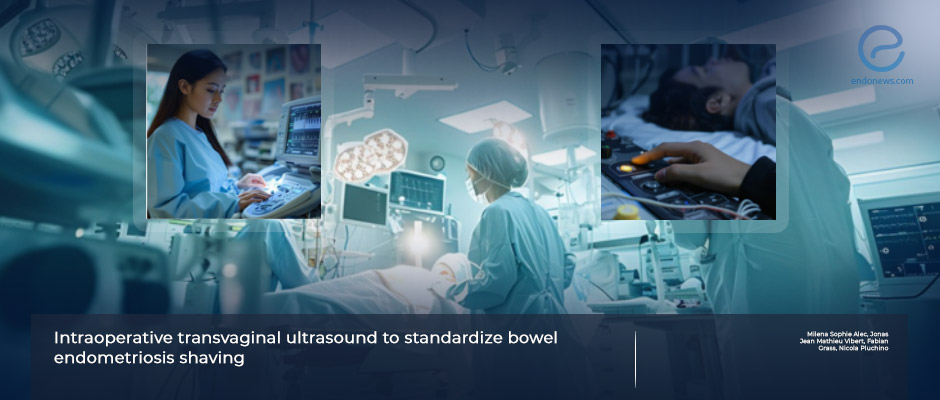Intraoperative Transvaginal Ultrasound-Guided Resection of Bowel Endometriosis
Alec et al. from the Department of Obstetrics and Gynecology at Geneva University Hospitals aimed to show how to manage rectal endometriosis using ultrasound in a narrative video. The main goal of their procedure was to check the rectal wall…
Key Points Lay SummaryFertility outcomes after discoid excision for colorectal endometriosis.
Colorectal endometriosis is one of the most severe forms of deep endometriosis, composing 85% of all bowel lesions. Radical treatment is segmental resection of the bowels, which can cause postoperative severe complications such as rectovaginal fistula and voiding dysfunctions that negatively…
Key Points Lay SummaryComparison of two different surgical approach to deep colorectal endometriosis in terms of postoperative outcomes.
Deep colorectal endometriosis affects one-fifth of women with endometriosis, which is commonly associated with more pelvic pain and severe gastrointestinal symptoms. Three surgical approaches for deep colorectal endometriosis are segmental colorectal resection, full-thickness discoid resection, and shaving operation. Choosing the…
Key Points Lay SummaryWhich surgical approach for bowel endometriosis?
A group of researchers from Spain, led by Dr. Alicia Hernández Gutiérrez, conducted a retrospective study to compare postoperative complications and recurrence of three surgical techniques: segmental bowel resection (group I), discoid excision (group II), and rectal nodule shaving (group…
Key Points Lay SummaryPreoperative factors to predict unresponsiveness in women undergoing endometriosis surgery
Endometriosis is defined as the localization of endometrial glandular and stromal cells outside the uterine cavity. Despite extensive research, the optimal management of endometriosis still remains unclear. Several treatment options include analgesic medication, hormonal treatments, and surgical intervention. There is…
Key Points Lay SummarySurgical techniques for rectosigmoid endometriosis, and functional outcomes
Rectosigmoid endometriosis is defined as the infiltration of bowel wall with the endometrial-like glands and stroma, reaching at least the muscular layer. Rectosigmoid endometriosis is encountered in approximately 8-12% of patients with a diagnosis of endometriosis. The most commonly involved…
Key Points Lay Summary
 By Selma Oransay
By Selma Oransay



 By Irem Onur
By Irem Onur

 By Hale Goksever Celik
By Hale Goksever Celik
